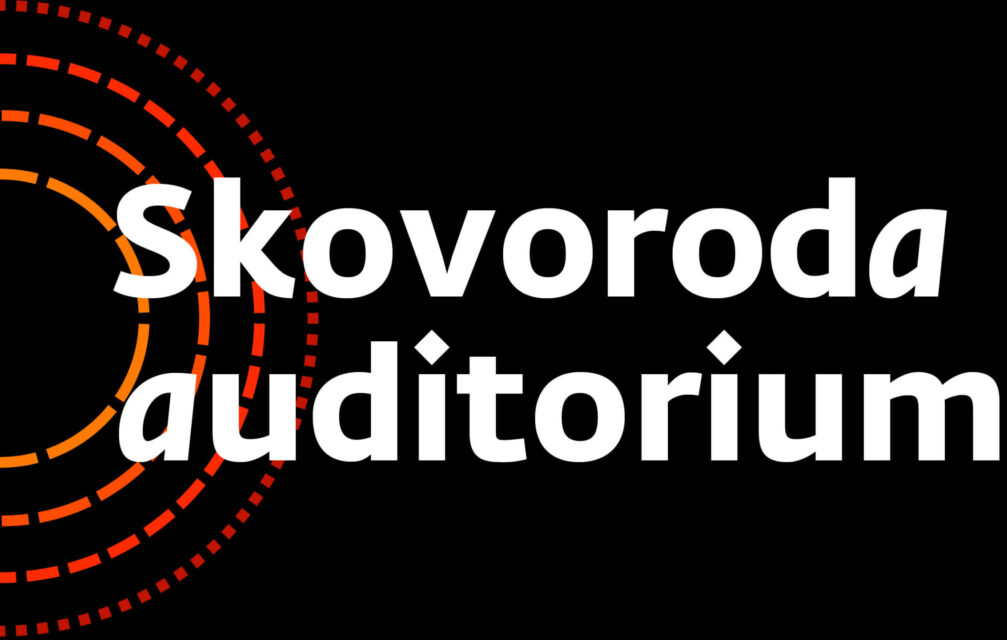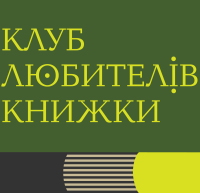A beautiful sunny day in spring overlooks a yard in a residential district. A man in a military uniform drags a civilian dressed in a red sports jacket, blue jeans and white sneakers. They then come up to another group of soldiers. Using the moment while the men in uniform are briefly distracted, the man in the red sports jacket makes a run for it, however, two of the men in uniform grab his arms while a third punches him to his side. The man shrieks and bends down to the ground in pain, landing on one knee. He is brought up again, arms forced around his back and led outside of the yard. This is exactly what has been caught on camera in a 90 second video in Luhansk – a city where I was born and lived until 2014, when the Russians occupied it, alongside their proxy seperatist units. This event was caught on tape by a random witness – and it was not a kidnapping. It was the work of the military regime of the so called ‘LNR’ which is continuously trying to mobilise more men in such a manner for the second month coming.
The video was sent through WhatsApp by an old friend who we can call Serhiy (the name used isn’t his real one for safety reasons). Back in 2015, circumstances forced him to return to Luhansk and as one can see by now, this was a terrible mistake. From the moment of this article being written, Serhiy did not leave his apartment for 68 days and counting. Leaving his state of isolation can cost him his life, and obviously not from COVID-19. ‘Rumours about a planned wave of mobilisation in the so-called ‘DNR’ and ‘LNR’ have circulated as far back as the autumn of 2021. However, back then the aim was just to replenish the existing units with those who have already served. They were offered a decent wage in local terms. By February 2022 however, mobilisation became compulsory, according to journalist Tetyana Katrychenko, coordinator of ‘Problems of Hostages in ORDLO’ (occupied territories of Ukraine) as part of the ‘Medical initiative for human rights’ organisation.
Read more: The Beast from the Void. Putin’s fascism: How it came about and what it wants
Officially, mobilisation in ‘LNR’ and ‘DNR’ was declared on the 19th of February 2022, which shows that Russia fills its ranks with the inhabitants of Ukraine, for the purpose of their assault on Ukraine. Without a doubt, a certain part of the local inhabitants supported the so-called ‘special military operation’ and were ready to carry out its ‘duties’ in honour of their self-proclaimed ‘republics’. However, one can see that the human resource here was deprived in the first weeks of the war. First, those who were mobilised were between the ages of 18 and 55, and from the 19th of March, the upper age limit was lifted to 65 (consider that male life expectancy in the Donbas region is 62). The lack of will by the locals to take part in the war shows that the occupational government carries out its policy of mobilisation with increasingly more brutal and deceptive methods.
‘If I go to the store now, I will probably be taken away. If I go out into the yard for a walk with my child for even a few, I will be taken away for sure’ Serhiy says. His estimation is not exaggerated. The military enlistment offices, ofcourse, continue to send out notices of mobilisation but rarely get a response from their subjects. Hence, the commandants of the ‘LNR’ and ‘DNR’, dressed in civilian clothes, patrol the streets, often waiting at bus stops, next to shops and shopping malls. In Luhansk, buses drive around the city, where all the ‘collected’ men are subsequently put into. Afterwards, these men are sent to military bases and soon after, to the front lines of the war.
It is not surprising that the streets of a 400,000 populated city have become empty. Seeing a man who is not a teenager, child or elder within the city is a rarity. The exception here is Russian soldiers, who, unlike ‘mobics’ (nicknamed for the locals who were forced to join the army), have certain freedoms. However, catching people on the street does not yield such quantitative results that would make a difference, so the main supplier of new troops became the industrial sector. For example, on the 10th of April, the Defence Intelligence of the Ministry of Defence of Ukraine informed us that around 1700 workers from the Alchevsk metallurgical plant have been mobilised (a plant which is state-owned by ‘LNR’). This was the fourth wave of mobilisation on the factory, and probably not the last one. The leader of ‘DNR’ Denis Pushylin has issued a mandatory requirement for every state industry to provide at least 50% of its male workforce. One can estimate that ‘LNR’ has a similar policy.
According to the laws of the ‘republics’, students of the tertiary education institutions cannot be mobilised. A colleague of mine, Denys Kazansky (who migrated from Donetsk), recorded an interview with ‘mobics’ who were taken captive by the Ukrainian army. One of those mobilised was 20-year-old Vladyslav, a student of one of Donetsk’s universities, a future engineer and programmer. At first, he received orders by letter but eventually he was dragged out of his own home and transferred to a military base in Makiivka (controlled by ‘DNR’), then to Belgorod (Russia), from where he was thrown in an assault on Kharkiv, one of the fiercest epicentres of the front. Vladyslav was lucky: ‘mobics’ were mostly designated for construction work, and when his group was intercepted by Ukrainian soldiers, his entire unit surrendered without a fight.
Read more: “This War was Unavoidable”: Russian Colonialism and the Self-Deception of the West
The absence of combat skills is not considered to be a sufficient reason to avoid being deployed onto the front lines. For example, in early April, it became known that ‘DNR’ had mobilised the entire crew of musicians of the Donetsk Philharmonic Society. According to locals, the musicians were invited to a film set, but instead were taken to army barracks. On the 12th of April, a Russian news outlet by the name of ‘Moskovsky komsomolets’ published an article – ‘A famous Donetsk pianist died in battle near Mariupol’. The man was found to be a jazz player by the name of Mykola Zvyagintsev. The fate of other musicians is still unknown.
The ‘commandants’ are also ignorant of the health conditions of their subjects. A friend of mine from Luhansk (let’s call him Oleksandr), is also forced to hide, even though in his 52 years of age, has a serious heart disease and is in fact completely unfit to serve in the military. If he is taken, he might die before even reaching the front lines. However, Oleksandr worries more about his 19 year old son, who is mentally disabled. His son is also forced to hide, because any medical evidence of being unfit to serve in the army will be ignored by the ‘commandants’. Recently, he has heard knocking on his apartment door, but did not recognise the people who stood there. Most likely, they were representatives of the military. Ttens of thousands of Luhansk families have mastered the art of pretending that the apartment is empty. This resembles something of the fantasy-horror film Quiet Place, who’s heroes are forced to hide and stay quiet in order to not be noticed by blind extraterrestrial creatures. Unfortunately, the ‘commandants’ are not blind.
Neither Serhiy nor Oleksandr support ‘LNR’, neither received the passports of the ‘republics’ or that of the Russian Federation. Moreover, they do not want to fight against Ukraine and their fellow compatriots – in fact, they had to stay in Luhansk as a result of their circumstances. From the 19th of February it was even impossible to leave the ‘republics’ to Russia. So in the end, the only viable option is to hide. The same is being done by those who are favourable to Putin but understand that they are cannon fodder in the eyes of the Russian generals. From those that have been mobilised, there are a certain number of those who were lucky enough not to be thrown into battle but are standing guard at checkpoints, military depots, patrolling and other non-combatant tasks. They are being paid with wages that are significantly higher than the average in the ‘republics’. This luck however, might not last long: there is no guarantee that they will not be dragged onto the front lines at any moment.
Many spectators and analysts are baffled by the obedience of how thousands of men in Donbas are signing their own death warrants. This cannot be explained by their loyalty to Russia and the ‘republics’. From the moment of the occupation of these areas in late spring of 2014 (8 years altogether), the local inhabitants lack the most basic civil rights and freedoms. The government of the ‘republics’ was built on repression and terror. Countless local residents became victims of reprisal without trial in the spring and summer of 2014. No one knows how many people were imprisoned in the infamous ‘dungeons’, which were designed for imprisonment, torture and even execution for those who have been deemed as disloyal to the government. The most horrifying creation of the occupation government was its concentration camp ‘Izolyatsia’ (isolation), located in Donetsk. Thanks to Stanislav Aseyev, who spent 2.5 years there, the world came to know about the horrors there. ‘Izolyatsia’ however, is only the most known institution of terror here, built in occuped Donbas. Hence, the locals face two choices: either refuse to fight against Ukraine and get thrown into a concentration camp (and death) or enter the combat zone and risk death.
Read more: False narratives on Ukraine can be fatal for European security
‘The mobilisation of Ukrainian citizens on temporarily occupied territories directly contradicts the norms of international humanitarian rights, which is clearly stated in Article 51 of the Geneva Convention VI on the issue of civilian populations in times of war’ – according to Yuriy Bilous, a prominent lawyer who collects evidence of Russian war crimes since the start of the war. ‘Citizens of Ukraine which live in the temporarily occupied territories are subjects under the protection of the Geneva convention, as they are under a foreign-occupied government. Besides the prohibition of mobilising such citizens, have the right to be respected, be safe from violence, any form of psychological intimidation and other acts that the planned mobilisation entailed’. Yuriy Bilous claims: despite the fact that the locals are forced to give in to the de facto government of the region, they do not actually feel any allegiance to this government. Therefore, it is unlawful that they are being forced to give oaths to a foreign and invading country and even more so, serve in its military.
According to Ukrainian law, military commissars and other operators of the ‘mobilisation’ in occupied Donbas will be charged with committing crimes relating to Article 438 of the Criminal Code of Ukraine for violating the basic laws of war. The implied punishment of this Article is a range of either 8 to 12 or 10 to 15 years behind bars, sometimes – life behind bars. Henceforth, the mobilisation that is occurring in Luhansk and Donetsk as well as other occupied settlements in Donbas is a crime. This is one crime of many that the Russians have committed in the 8 years of aggression against Ukraine.




